A little January lettuce harvest before the temps go into the teens for the weekend. (It’s been growing since fall… super slow. The lettuce in the cold frame was larger, but just barely.)
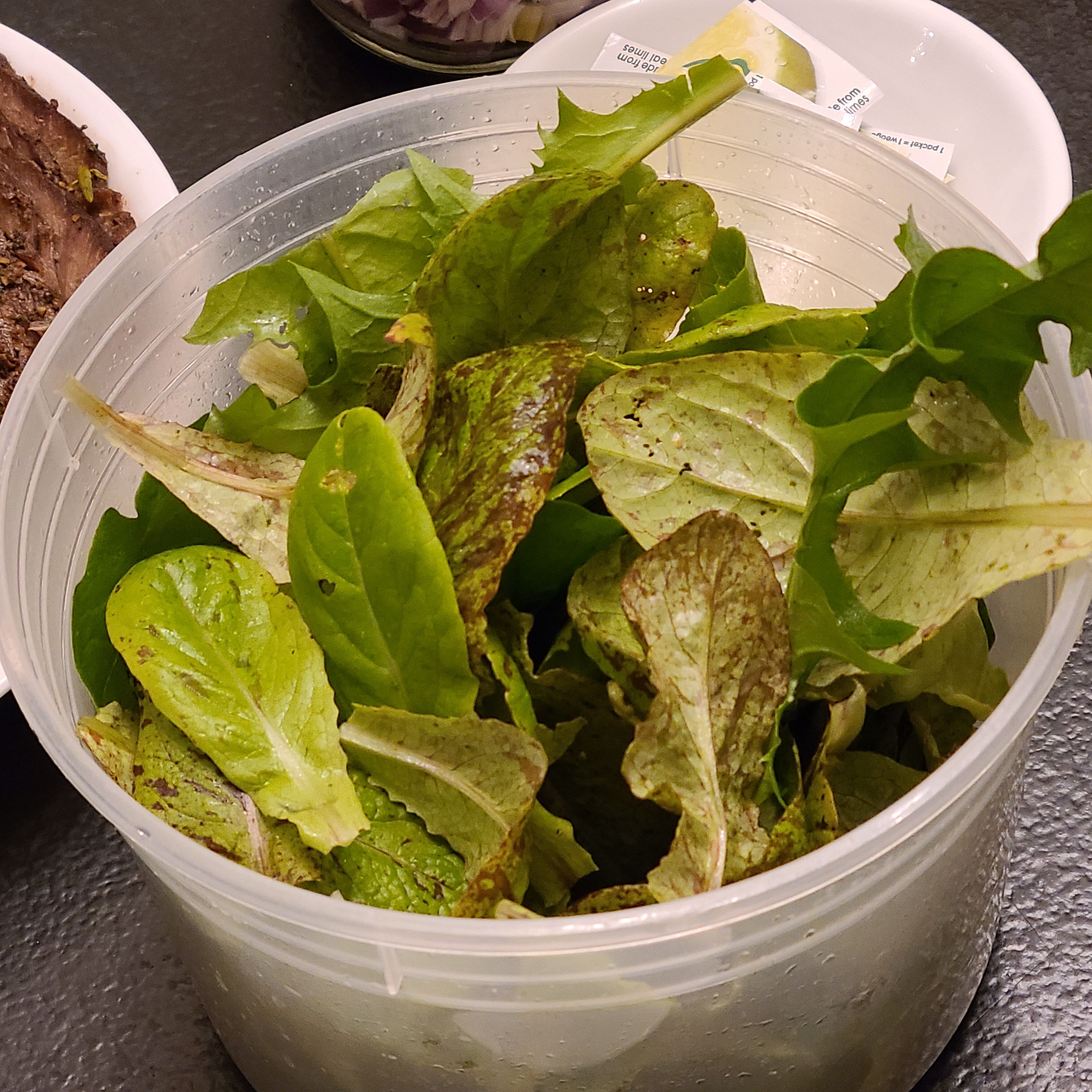
A little January lettuce harvest before the temps go into the teens for the weekend. (It’s been growing since fall… super slow. The lettuce in the cold frame was larger, but just barely.)

An endless summer. Today’s high was about 65°. More mushrooms are still coming up. I picked a few more small peppers and some kale.
Heather made some grape juice from Merrie’s Concord grapes.
November 1st, and we’re still picking peas. They’re not as good as summer peas, but I won’t complain!
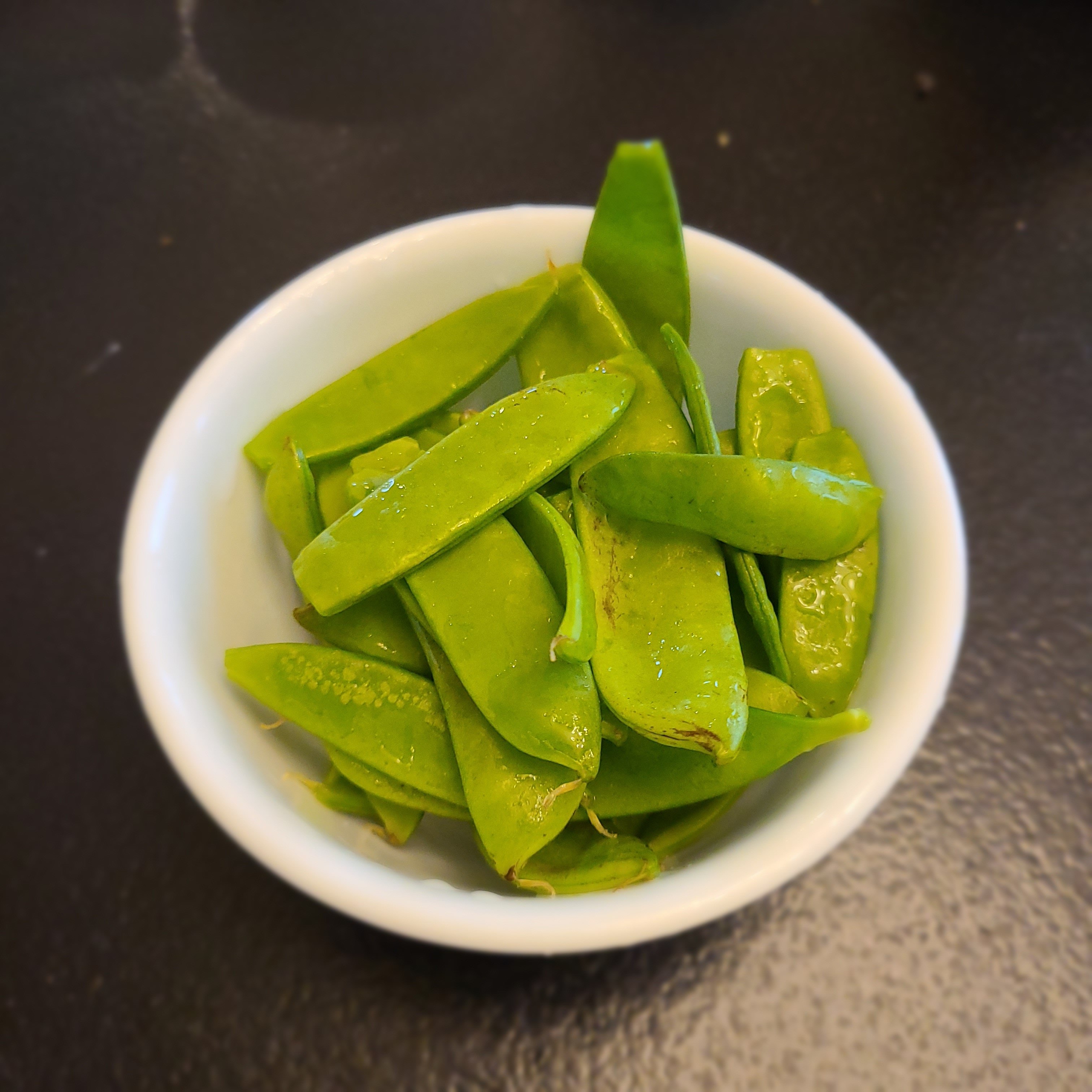
I think the mushroom harvest has finally ended. Wow! I’m pretty sure we have a year’s worth of dehydrated mushrooms thanks to Heather’s work.
The new growth on the artichoke plants looks great. They’re over two feet tall. Im excited to see what next year brings.
As of yesterday, we were still harvesting tomatoes and the late summer planting of peas. They’ve definitely slowed down, though, with fewer hours of daylight.
Heather pulled two potato plants today and got several pounds of potatoes. Here’s the biggest one:
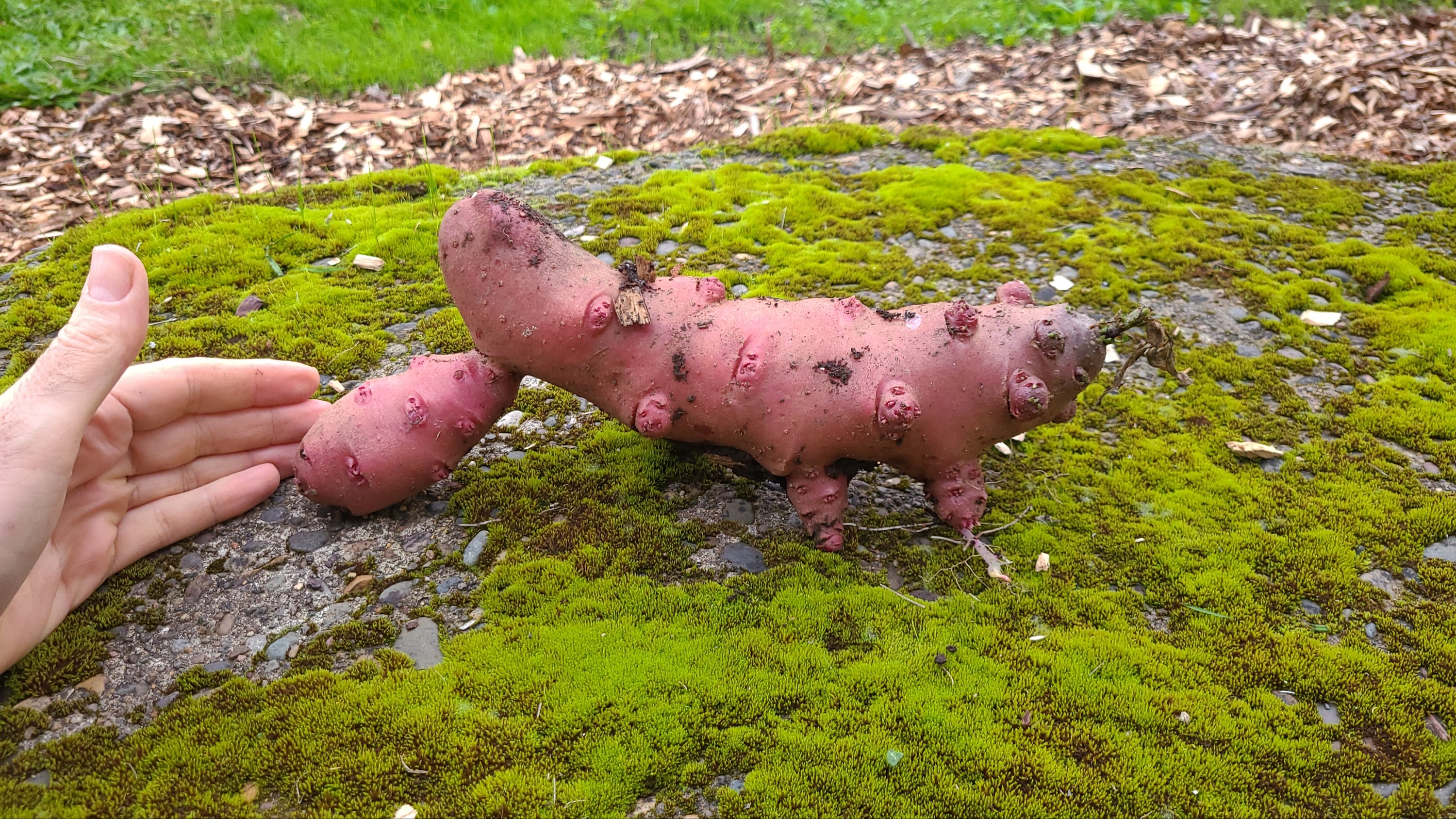
She also harvested a rutabaga. There are several more out there. Plenty of kale and chard, too. And we haven’t even touched the leeks yet
Heather planted garlic in the garden and around the grapes around the beginning of October. It’s already sprouting.
We started moving some firewood into the carport for this season’s burning. We still have a lot of wood to split to get ready for next season.
Wow, the first rain of the season, and the winecap mushrooms are fruiting. It’s like magic! We’ve probably picked a gallon in two days. They’re huge.
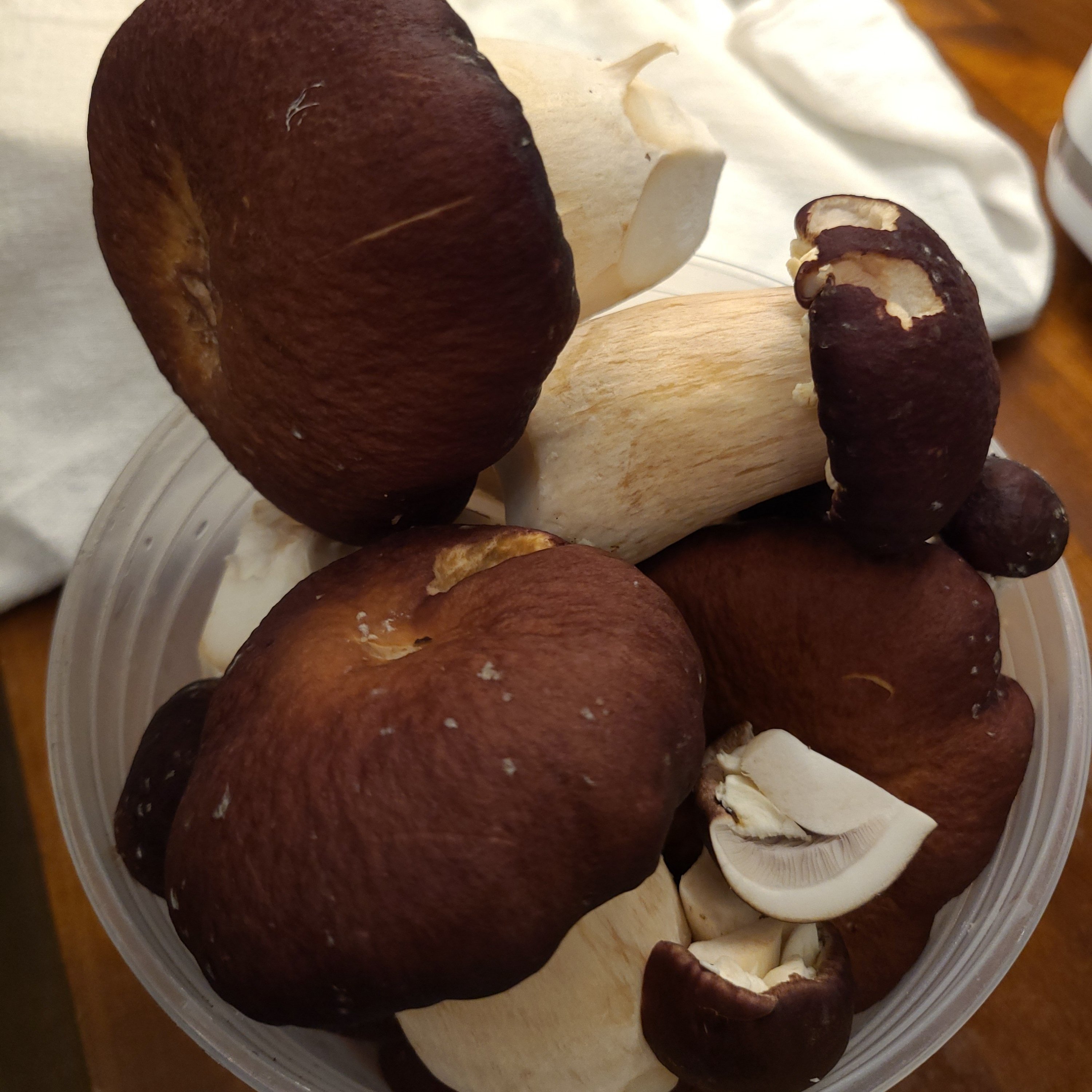
Artichokes: I learned that they start their new growth for the next year in the current year. You’re supposed to chop down the old growth as soon as it’s done producing artichokes.
This evening brought the first rain of the season. We’re supposed to get a couple inches over the coming week. So we were busy outside today. We moved a lot of wood chips, put some tarps on things, and did a lot of general tidying.
Heather is dehydrating a bunch of peppers and onions. They smell so good.
We started harvesting our second pea planting of the season yesterday.
Heather pulled out the bush beans yesterday. We’ll get some dry beans plus some beans for planting next year. I turns out the beans kept on producing, and I think if we had kept harvesting, they would have kept coming.
The artichokes are sending up second sprouts now. I need to read up and learn what that’s all about.
Tomatoes are finally in. Here’s one picking.
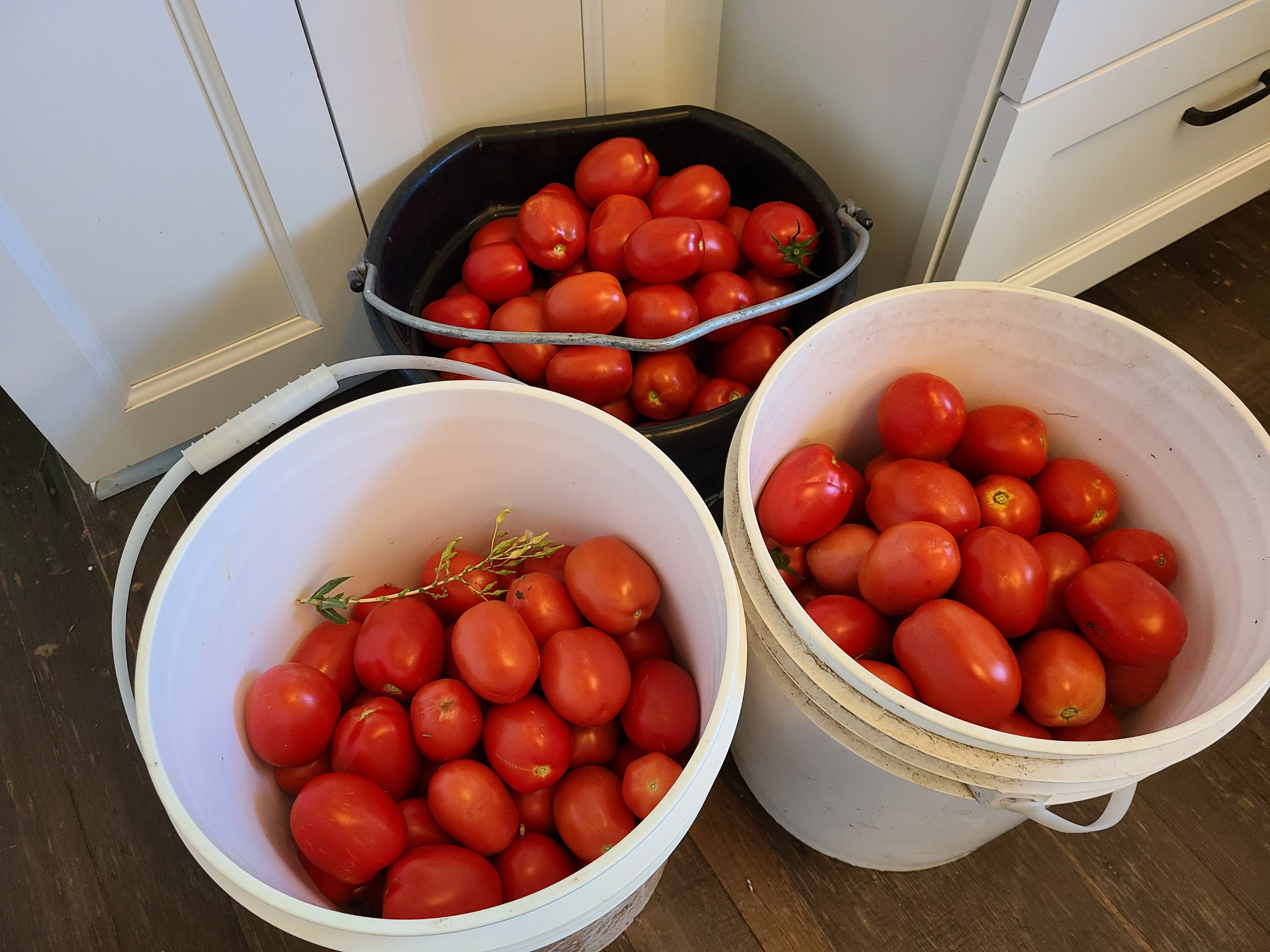
We also picked 10+ gallons of purple plums from the tree across the street.
Oh my, so much to catch up on since July!
The deer are still in the neighborhood but not in our garden. Success! (They’ve gotten to Grant’s garden, though.)
Potatoes, tomatoes, peppers, onions, coriander, green beans, celery, kale, and more kale… all doing well. We didn’t keep up with the cucumbers, so they grew huge and stopped producing more.
The corn didn’t get enough water this season, so some of the plants and ears are small. That will be pretty easy to fix next year.
And the rhubarb, wow! We just planted it this year, and I’ve had to harvest some stalks because the leaves were so large and heavy that they broke.
We got plenty of blackberries from our own land in early August, but even on September 1st we were still able to pick more. I have a blackberry rhubarb crisp with hazelnut topping in the oven right now.
The artichokes also delivered this summer. I had to give them each an occasional bucket of water to keep them going.
Plum harvest was not than sufficient; in fact, we didn’t even get around to harvesting all of them before it was too late… but we got enough. The Bartlett pears are coming in right now, and the tree is loaded. (It’s also loaded with Asian pears, but they’ve never been tasty from this tree.) Grapes will be coming ripe next.
To top things off: Heather bought a dairy goat yesterday. Day one was tough, but she had a comparatively smooth milking experience this evening. The goat is still experiencing relocation trauma, but it sounds like things will settle down over the next couple weeks. We’re keeping her separate from Karen the sheep, but we’ll get them together soon.

This is our second basket of beans, picked a few days after the first. It takes over an hour to harvest this amount.
Our trail cam recorded one deer the night after we put up the netting, and none since. Even the roses by the front porch are blooming again. Not sure why they disappeared so completely
With the deer gone, the peas have given another nice flush of pods to harvest.
We got a nice shot on the trail cam of a deer walking through the monofilament like nothin’. So we installed polypropylene deer fencing around the garden. It seems to be working, but we’re keeping the trail cam out there in case the deer try anything.
I planted the last batch of corn today. The previous plantings are all up.
We’ve been picking a few beans here and there, but I think we’re just days away from a good crop starting.
We installed three lines of 50lb monofilament around the garden a few days ago. The same day, the field across the street got mowed. The guy who mowed said he saw several deer bed areas. Since that day, the garden is doing better, but we don’t know if it’s because of the monofilament fence or the mowed field.
The volunteer orach plants (from the ones that went to seed last year) have been doing really well. We got our first handful of bush beans today, and there are tons of blossoms. I think the peas are done (healthy vines but noore blossoms). The third planting of corn is sprouting.
Heather harvested the rest of the garlic a couple days ago.
Only half of my first and second corn plantings came up (I think the birds got to them), so the third was a reseeding. Today I planted a fourth batch where the just-pulled garlic was. The soil was compacted, so I took a shovel and pitchfork to it.
The deer are systematically decimating our garden. Every day, it’s something… Topping off the pea vines, tomato plants,and potato plants. I’m sure the beans are next, and kale. We saw deer twice today in broad daylight (10am and 12pm). We’re not sure what to do. This is the first year we’ve had this problem, other than the very end of the season last year… which was our omen of things to come. Perhaps it’s because our neighbor doesn’t have a dog any more.
Anyway, apparently we haven’t collected eggs from our two chickens for a few days.
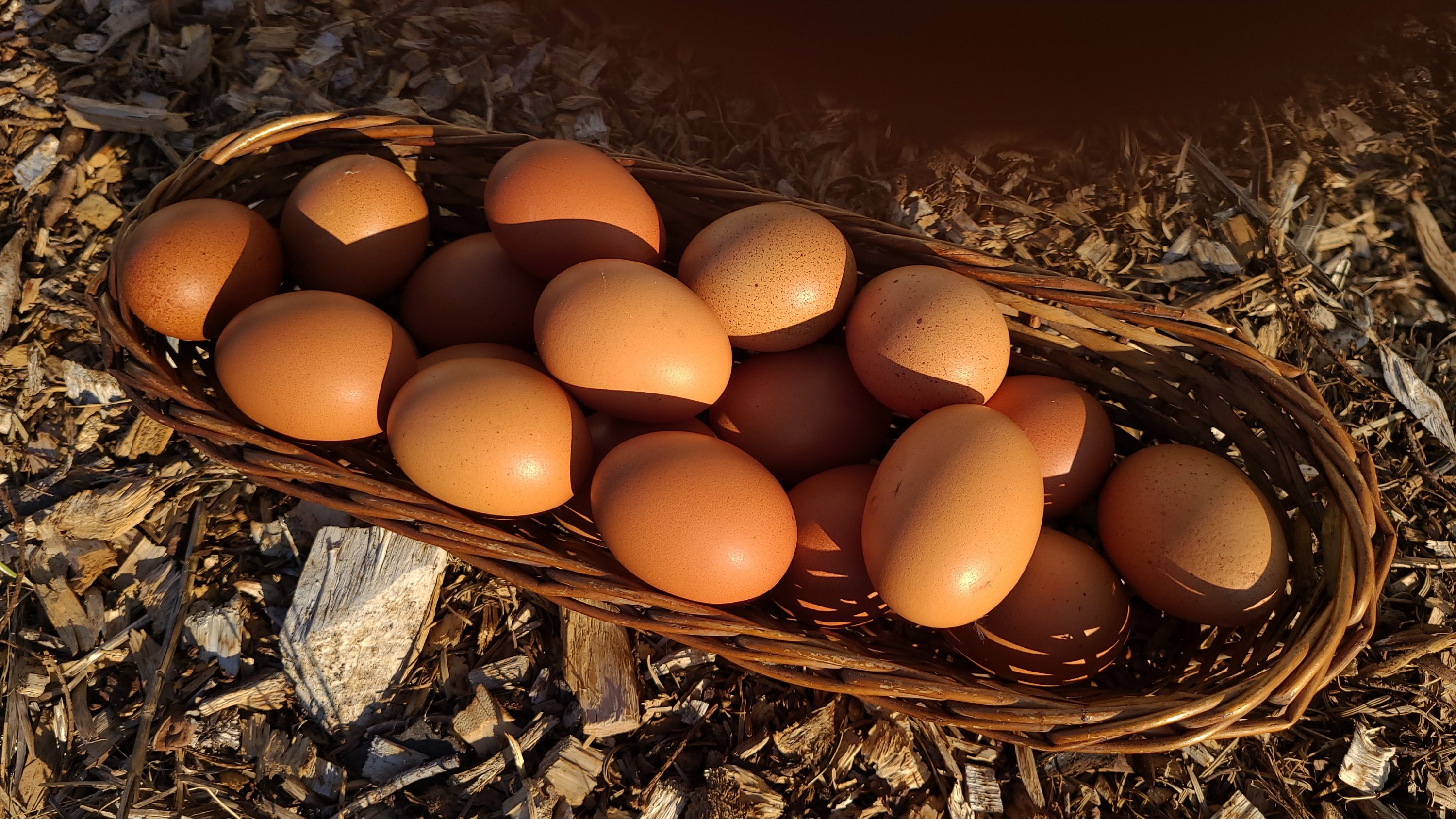
We removed the fences from the small fruit trees to pull out grass, and yesterday a deer ate most of the apples off the apple tree, along with the tops off two tomato plants.
I planted 12 corn seeds in half of the area where Heather harvested garlic today. I’m just three days later than when I started last year. I’ll plant some more each week for the next month or so as the rest of the garlic gets harvested. I love having a month-long supply of corn on the cob in late summer. Yum!
Today I harvested 130 heads of Italian garlic. It was so satisfying.
This garlic was part of Josh’s birthday gift to me in September 2022. He ordered a beautiful purple italian variety for me to plant last fall. He also connected with a friend and got several pounds of another variety (which I call the “Roberts’ garlic”). Top 10 birthday gift. ❤️❤️❤️
During the 2021-2022 gardening season, ALL of our garlic plants (and leeks) were eaten by a gopher. Because of this, I over-planted garlic last September to ensure that we not only had backup garlic this summer, but backup-backup garlic, and worst-case-scenario garlic, and apocalyptic end-of-days garlic.
My strategy has worked so far. Kinda. We still have a gopher popping up near the pasture garlic patch (with only one alliumicide so far). But the garlic patch by the front door is untouched, as is the allium row in our main garden. We even had three renegade clumps of garlic pop up under the grape vines, which is where they had been planted the previous season. Those lucky three garlics somehow evaded the Great Gopher Garlic Gorge of 2021-2022.
When we lived in upstate New York, there was an older lady in our apartment building who gave me some advice. “If it’s 5 o’clock and you haven’t started cooking dinner, start sauteing some garlic– it’ll trick your husband into thinking dinner’s almost ready.” Not sure I’m on board with tricking my husband (plus, he’s always so willing to be a part of anything I do in the kitchen), however I do believe that the smell of sauted garlic is inspiring. It’s a solid flavor base for any meal.
None of the other garlic I planted last fall is ready to harvest yet. In my very first year of garlic growing, I harvested everything the week of the 4th of July. Today is only May 26th!! Hurray for early harvests!! Maybe the rest will be ready in July. You know when it’s time to harvest after you remove the scapes, then watch for the third leaf to begin browning, and that’s when you harvest. If the first bulb you pull isn’t fully formed wait a week and try, try again.
This September I will plant more and more and more garlic. My goal is to grow the garlic under the grape vines and beneath the fruit trees. We dumped a bunch of wood chips under the grape vines early this spring (Josh almost got the tractor stuck, but he was able to dig himself out with the bucket). Hopefully the area under the grapes and beneath the fruit trees will become a happy home for my allium allies.
The Italian garlic is curing in the carport on some wire racks. Lots of airflow. It’ll rest there for about 2 weeks, then I’ll be able to braid or otherwise process my beautiful, beautiful garlic.
I love garlic. I love **everything** about garlic.
And if you’re a TL:DR kind of person, I’ll give you Josh’s version of this post:
“Heather harvested 130 garlic bulbs this morning. It’s curing on racks in the carport. She planted different varieties of garlic in several spots on our property. The other varieties she planted aren’t ready to be harvested yet.” ☺️

The neighbor’s hay got cut on May 17, way earlier than usual. I wonder if there will be a second cutting this year.
The garden is mostly planted now. Transplanted: hops, kale, peppers, and tomatoes. Seeded: beans.
Grant’s garden is also started: Old Mother Stallard beans and a couple dozen watermelon seeds.
We transplanted a rhubarb plant on the north side of the house.
The cilantro that overwintered is blooming, so we should be able to harvest coriander seed soon. Heather checked a couple of garlic plants, and they have about four plump cloves per head. Hopefully by harvest time on June, they’ll have more cloves, but they’re looking great.
Karen the sheep was late to lose her winter coat this year. She still has a small patch on her back.
The mushrooms got “planted” (or whatever the word is) today.
Heather seeded rutabagas in the garden about a week ago, and they’re sprouting.
We had another cool, wet week after the hot day. The pear tree has just finished blooming, and the apple tree is in bloom.
We transplanted celery in the garden. It’s our first time trying to grow it. We also transplanted leeks.
We transplanted kale today on the south side of the house. We’ll see if it gets too dry this summer. “It’ll be fine, it’ll be fine,” Heather says just now.
I’m enjoying harvesting dandelions this year. We didn’t even have to plant them, and they’re one of the first harvests of the year.
It has been a very rainy month, but then yesterday was a high of 88°. The plum tree is done blooming, and now the pear tree is blooming.
The onions are growing really well. Heather planted a few more a couple days ago.
Today Heather transplanted cabbage, and she seeded some bush beans. It might still be too early for beans, but we’ll see.
Three artichoke plants survived last summer and through the winter. I finally mulched them with a thick layer of wood chips. Hopefully that will help them out this year.
Heather started parsley in trays a month ago, and it finally sprouted (parsley takes a while). She also has a bunch of lettuce starts waiting to be transplanted.